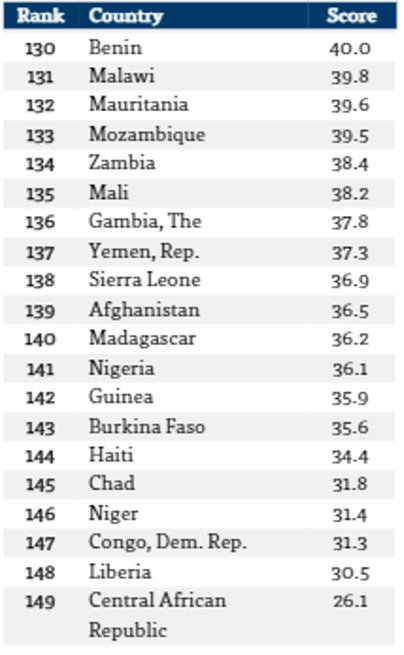Which countries are achieving the UN Sustainable Development Goals fastest?

Here's who's doing the most to end poverty, protect the planet and ensure prosperity
Image: Ben White
Stay up to date:
Sustainable Development
The ultimate aim of the Sustainable Development Goals, which replaced the Millennium Development Goals in 2015, is to end poverty, protect the planet and ensure prosperity for everyone. Each goal has specific targets that need to be met by 2030.
So how close are countries to meeting them? To find out, non-profit organization Bertelsmann Stiftung and the UN Sustainable Development Solutions Network have created a prototype index that measures their performance.

The SDG Index measures 149 countries, comparing their current progress with a baseline measurement taken in 2015.
Here are the top performers this year:

Across all 17 goals, Sweden tops the list of countries surveyed. It is, on average, 84.5% of the way to achieving the targets envisaged for 2030.
Following closely were Scandinavian neighbours, Denmark and Norway, with Finland in fourth place. Western European countries, plus Iceland (ninth), took the remainder of the top 10 slots and four of the top 20.
Also in the top 20 were Canada (13th), the Czech Republic (15th) and Slovenia (17th). Asia-Pacific’s top performers Japan, Singapore and Australia rounded off the list at 18th, 19th and 20th, respectively.
The SDG Index underlines that despite achieving high percentages, all countries still have their work cut out to close the remaining gap.

The report stresses that many high-income countries perform well in areas such as economic development but still fall short of achieving a good all-round SDG performance. This is because they face significant challenges in specific areas such as climate-change mitigation, income inequality, gender equality and education.
The top three, for example – Sweden, Denmark and Norway – will need to focus particularly on evolving their energy systems from high-carbon to low-carbon sources to fulfill the environmental sustainability goals.
Countries where the report suggests support and solidarity is needed most:

Not unexpectedly, some of the world’s poorest countries are near the bottom of the ranking. The SDGs are, after all, a demanding bunch: including a call to end extreme poverty and hunger, universal access to healthcare, education, safe water and sanitation, modern energy services, and decent work. These areas continue to be an uphill struggle for many nations.
"We know that some countries may be puzzled by their scores and that some will be unhappy with their place in the global rankings," say Aart de Geus and Jeffrey D Sachs in the preface to the report. But if there are any mistakes or gaps in the data, they add, the beauty of an online report is that they can be corrected as quickly possible.
For those countries that aren't yet showing results, such as the Central African Republic in the chart below, assistance may be necessary. It could come through international mechanisms such as foreign direct investment, technology sharing and global tax reform (so poor countries can fight tax evasion by international investors).

A full report with data is available to download; or there is a compact version.
Don't miss any update on this topic
Create a free account and access your personalized content collection with our latest publications and analyses.
License and Republishing
World Economic Forum articles may be republished in accordance with the Creative Commons Attribution-NonCommercial-NoDerivatives 4.0 International Public License, and in accordance with our Terms of Use.
The views expressed in this article are those of the author alone and not the World Economic Forum.
Forum Stories newsletter
Bringing you weekly curated insights and analysis on the global issues that matter.
More on Economic GrowthSee all
Swapan Mehra and Akim Daouda
June 16, 2025
Aengus Collins
June 12, 2025
John Letzing
June 11, 2025
Valentina Vellinho Nardin
June 10, 2025
Spencer Feingold
June 10, 2025





